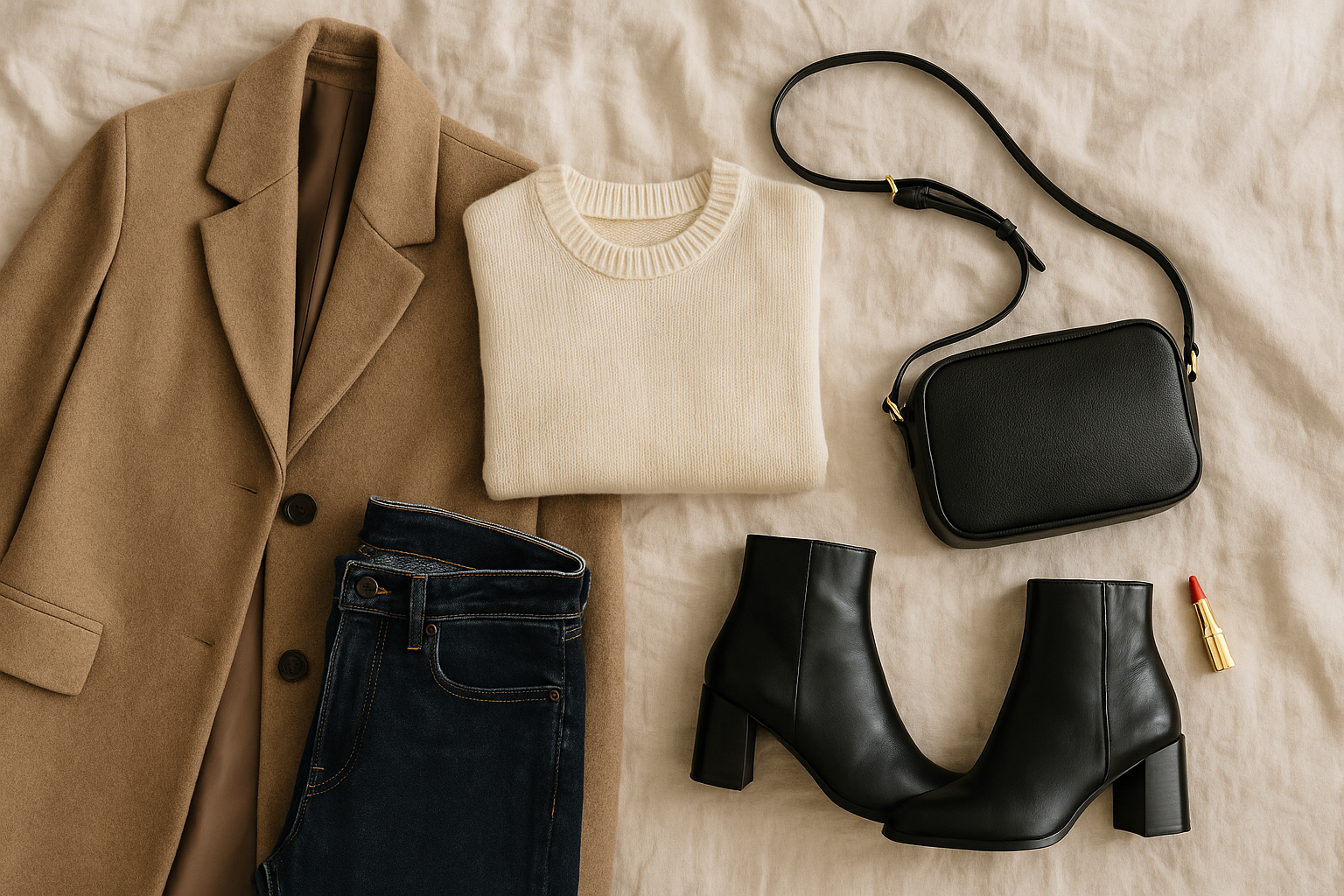
Why Wardrobe Color Palette Matters
Choosing a wardrobe color palette is about more than just looking good—it’s a strategic way to streamline your closet and ensure every piece effortlessly coordinates. By defining a cohesive set of core and accent colors, you’ll:
- Simplify Outfit Planning: Eliminate guesswork when mixing and matching.
- Save Money and Time: Shop intentionally, avoiding items that clash with your established palette.
- Enhance Personal Style: A consistent color scheme helps you look polished and confident.
Whether you’re curating a capsule wardrobe or just refreshing your personal style, understanding how colors work together is key to a closet that feels both cohesive and expressive.
Determine Your Dominant Color Type
The Tonal System of Color Analysis categorizes your coloring based on qualities like depth, warmth, and clarity. Dominant tonal types include Light, Deep, Warm, Cool, Soft, and Clear (or Bright). Determining your dominant color type helps you identify which shades naturally harmonize with your hair, skin, and eyes.How to Figure Out Your Tonal Category
- Assess Depth (Light vs. Deep)
- Light types usually have blonde hair and fairer features. Darker shades may overpower them.
- Deep types often have dark hair, eyes, or strong contrast, and can carry richer, more intense colors.
- Evaluate Undertone (Warm or Cool)
- Warm types look radiant in earthy, golden, and autumnal tones.
- Cool types shine in blue-based, icy, or jewel-like hues.
- Consider Brightness (Clear vs. Soft)
- Clear (or Bright) types handle bold, high-contrast colors effortlessly.
- Soft types look better in muted, gently blended shades.
Take note of which factor feels most dominant. For example, if you notice you’re drawn to deep, vibrant colors that don’t wash you out, you might be a Deep-Clear (Bright) type. If pastels and softer hues look best, you could be Light-Soft. This dominant color type becomes your guide for building a harmonious wardrobe palette.
How to Build a Color Palette
Once you’ve figured out your dominant color type, the next step is creating a wardrobe color palette that complements it. A good rule of thumb is to select 3–5 main colors:
- Choose 1–3 Neutral Foundations
- Popular neutrals include black, white, gray, navy, tan, and cream.
- Pick neutrals that suit your tonal direction (e.g., Deep types might favor charcoal or navy, while Light types might opt for soft gray or beige).
- Add 1–3 Accent Colors
- These accent shades should align with your dominant color type.
- For example, a Warm palette could include rust or olive, while a Cool palette might feature teal or lavender.
- Consider Your Lifestyle and Personality
- A business-casual setting might lean more on neutrals and subtle accents.
- A creative workplace could allow for more vibrant or unusual color combinations.
Sample Wardrobe Color Palettes
Below are example palettes that cater to different dominants. Use them as inspiration, but feel free to tweak shades based on your own style.
Classic Neutrals Palette

- Base Neutrals: Black, White, Gray
- Accent Color: Navy Blue
- Great For: Many types, especially Cool or Clear individuals who love a minimalist or professional aesthetic. This palette feels timeless and effortlessly chic.
Warm & Earthy Palette (Deep/Warm)

- Base Neutrals: Beige, Chocolate Brown
- Accent Colors: Rust Orange, Olive Green
- Why It Works: Deep or Warm types can handle richer hues. Earthy accents complement warm features and bring a cozy vibe.
- Great For: Autumn-themed wardrobes, bohemian styles, or anyone who feels energized by natural hues.
Cool & Calming Blues Palette (Cool/Light)

- Base Neutrals: Light Gray, Navy
- Accent Colors: Sky Blue, Powder Pink
- Why It Works: Light/Cool types shine in softer or cooler shades that don’t overwhelm. Navy adds depth without draining color from fairer complexions.
- Great For: Relaxed, professional wear that remains soothing and polished.
Bright & Bold Accent Palette (Clear)

- Base Neutrals: Black, White
- Accent Colors: Fuchsia, Emerald Green
- Why It Works: Clear types thrive on striking contrasts. Vibrant accents pop against a neutral base.
- Great For: High-impact outfits, statement pieces, and creative environments.
Tips for Mixing and Matching Colors
- Follow the 60-30-10 Rule
- 60% primary color (usually a neutral), 30% secondary color, 10% accent or statement color.
- Experiment with Monochrome
- A monochromatic look in various shades of the same color can be ultra-chic. Keep things interesting by playing with textures and silhouettes.
- Consider Complementary vs. Analogous Colors
- Complementary (opposites on the color wheel) for bold contrast.
- Analogous (neighbors on the color wheel) for a more harmonious, understated feel.
- Test Before You Commit
- Start with smaller accessories to see if a color works with your dominant color type. If you love it, upgrade to larger investment pieces.
FAQ: Choosing & Maintaining Your Wardrobe Color Palette
Q: How many colors should I choose if I have a complex tonal direction (e.g., Deep-Cool-Soft)?
A: Focus on what feels most dominant. If you’re mainly Deep and Cool, zero in on richer cool tones (navy, burgundy) while keeping them slightly muted if you have a Soft element.
Q: Can I change my palette if I dye my hair or get a tan?
A: Absolutely. Your color type can shift if you make significant changes to your hair color or skin tone. Reevaluate periodically to ensure your wardrobe still complements you.
Q: Should I include patterns?
A: Patterns are welcome but be mindful of color combinations. Look for prints that incorporate your chosen color palette, ensuring they harmonize with other pieces in your closet.
Q: How do I handle trends that don’t align with my color type?
A: If a trend color clashes with your palette, try items that you do not wear close to your face like a belt, shoes, or a bag. This way, you can stay current while still achieving overall harmony.
Final Thoughts
Selecting a wardrobe color palette is both an art and a science—combining personal style with insights from the Tonal System. By determining your dominant color type and building a cohesive palette around it, you’ll create a closet that’s easy to manage, visually appealing, and true to who you are. Over time, you’ll refine a palette that not only flatters your appearance but also reflects your unique personality. Happy styling!
Author’s Note:
Ready to explore your dominant color type further? Tools like OpenWardrobe (or your favorite digital wardrobe platform) can help you organize your closet, test new color combinations, and discover the shades that truly make you shine.


.svg)



